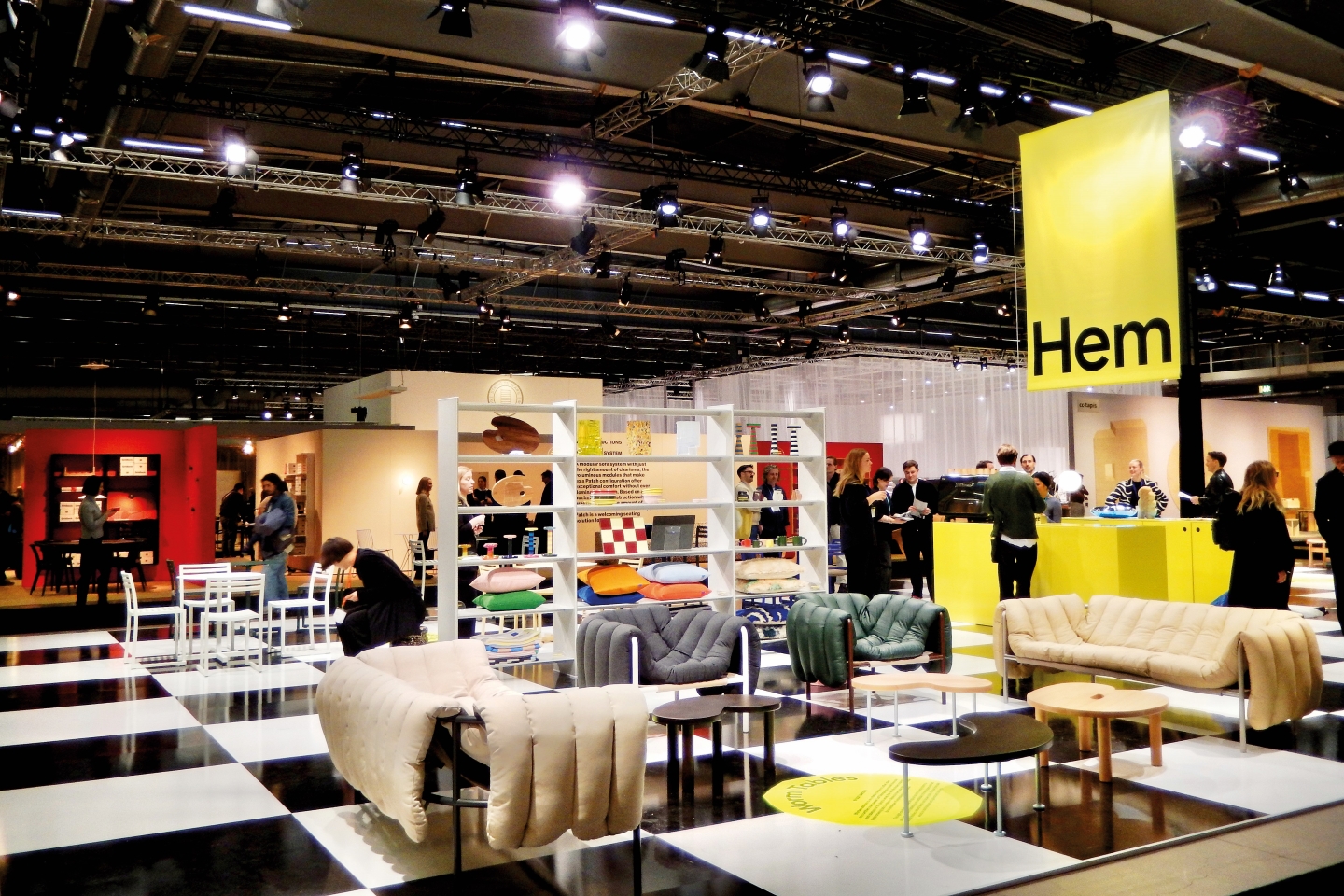
The Stockholm Furniture Fair welcomed 18,000 visitors, including more than 400 media practitioners, from around the world (All photos: Aireena Azni/ The Edge Malaysia)
Smaller in scale, bigger in purpose. The second edition of the Stockholm Furniture Fair, which took place in the Swedish capital over five days in February, was a meeting site for a community of architects, planners, designers and enthusiasts alike.
The number of exhibitors taking part in the event, which dropped significantly from 480 in 2023 to 270 this year, raised some eyebrows. But director Hanna Nova Beatrice assured that it was chiefly due to the team’s refreshed strategies to streamline operations and consolidate their focus. “For us, the size of the fair was not the main thing — it was more important to reinvigorate it with good curation, experiences and new energy.
“This year, exhibitors invested more in activating their booths by organising events such as book readings and golf tournaments. Visitors appreciated it, and we believe it’s the way forward. Trade fairs need curation and environments that stimulate.
“As organiser, our aim is to boost the market and promote the industry. Business is at the core of everything, but it’s also important to have fun, push talent and gather the Scandinavian design community. It’s time to reimagine the traditional trade fair format,” she said.
Held at Stockholmsmässan — the largest expo centre in the Nordic region — the Stockholm Furniture Fair welcomed 18,000 visitors, including more than 400 media practitioners, from around the world. Comprising a range of exhibitions and talks by industry experts, it gave a clear, concise and exciting overview of Nordic design.
dscn0911.jpg
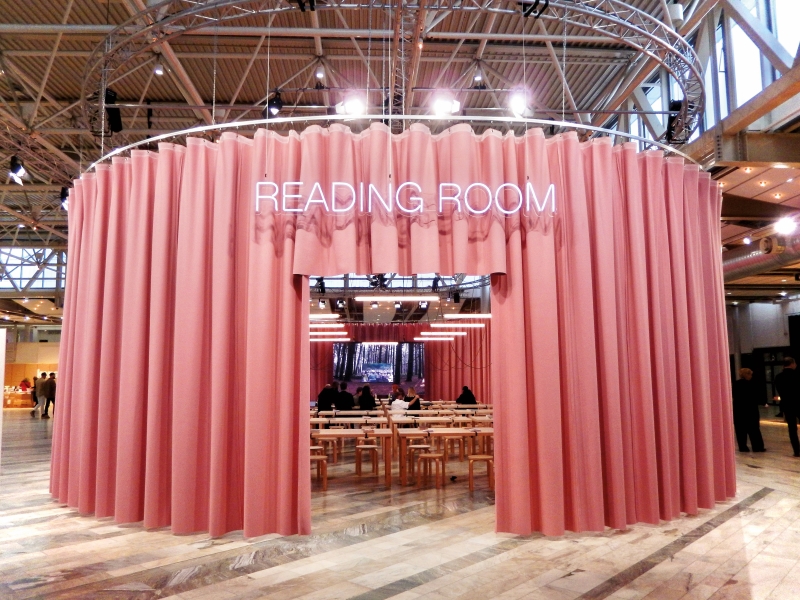
On the left side of the entrance was a site-specific installation by the fair’s guest of honour Formafantasma, a research-based Italian studio whose main priority is to look at the ecological, historical, political and social forces shaping design discipline today. The company’s first showcase in Sweden, the Reading Room, enclosed by a Maharam pink curtain, was built as a resting space for visitors to sit down and take a breather from exploring the fair. It was also equipped with books on ecology and design for everyone’s reading pleasure.
“We are looking forward to coming to the Stockholm Furniture Fair to see designers challenging the status quo. We are excited to contribute to a more thoughtful, environmentally sound landscape of design. That is our focus and what we are most interested in,” said co-founder Andrea Trimarchi.
The fair was heavily focused on sustainability and many of the discussions and forums that took place centred around the subjects of forestry, local production, waste management and the shift of perception towards contemporary aesthetics. Furniture and other design elements from hundreds of exhibitions would be reused or sold after the event to ensure nothing went to waste.
For instance, tables, stools and benches in the Reading Room had been numbered and signed by Formafantasma and would be available for purchase after the fair. Created in collaboration with Finnish furniture company Artek, the products were constructed using wild birch, a new material adopted by the label after a reassessment of their strict selection criteria for wood as a response to climate change and the industrialisation of forests. This significant move would allow the brand to incorporate a wider range of trees into its creations.
Meanwhile, the pink fabric will be donated to an art school and books such as The Life of Plants: A Metaphysics of Mixture by Emanuele Coccia and The Mushroom at the End of the World by anthropologist Anna Tsing will be divvied up among a few design schools.
stockholm_furniture_fair_2024.jpg
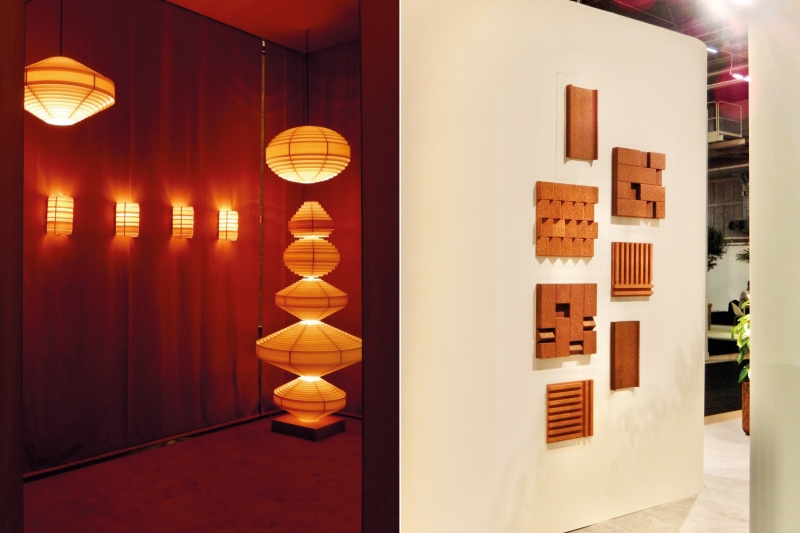
Popular platform Älvsjö Gärd, set up in Hall A, featured experimental and limited-edition pieces by designers and makers, ranging from small-scale brands to large design companies. Artist Fabian Bergmark Näsman created sculptures that look like a combination of sci-fi plants, fitness equipment and playground architecture.
Swedish designers Alexander Lervik and Gustav Winsth went one step ahead with technology of the future as they used virtual reality to design a collection of bulbous metal armchairs. Visitors were able to experience the manufacturing process at their booth, where a VR headset was provided.
Still on the subject of chairs, another Swedish designer, David Ericsson, who has a deep fascination for the object — a lot of his research revolves around seating — showcased Molnas, two pieces that marry the concept of pragmatic thinking with the slow hand of a decorative painter. Parts of his research project called “Wrong Construction at the Right Place” were also on display at the fair.
Taking up a huge space at Hall C was the Greenhouse exhibition, a platform for aspiring, up-and-coming creators. It featured a total of 32 designers and 22 design schools from the world over, acclaimed for their bold exploration and experimentation with aesthetics and practices.
The designers were evaluated by the Greenhouse jury, comprising experienced and award-winning industry players including Greenhouse project manager Jennifer Gröhn, Anya Sebton, Shane Schneck, Marcia Harvey Isaksson, Kristoffer Fagerström and Björn Florman, who assessed them based on the criteria of curiosity and innovation.
The showcase encouraged participants to display their creative, unique pieces and communicate their thought process, practices and vision to potential partners. Many of them looked back on design techniques used in the past and adopted or challenged the norms by reinventing new products with fresh approaches and perspectives.
laura_casanas_maya_1.jpg
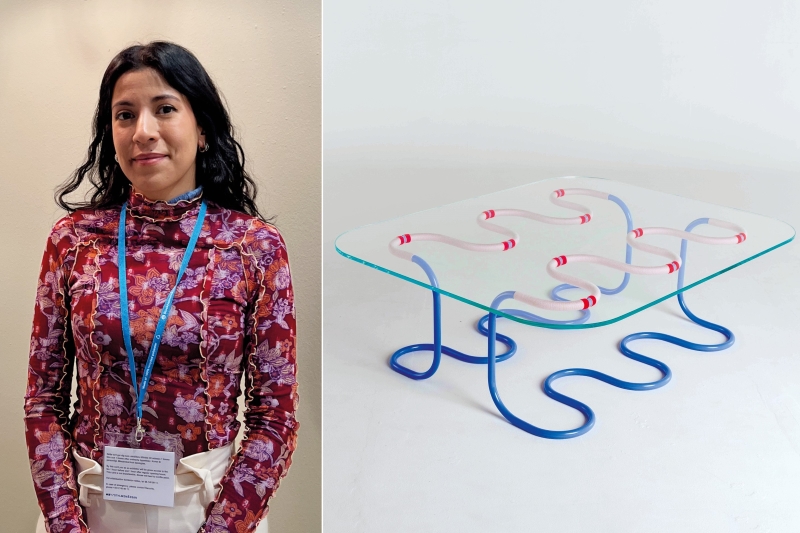
Laura Casañas Maya’s creations were based on passementerie, a broad term that encompasses a variety of trimmings such as tassels, fringes, gimp, cords and pom-poms, traced back to the 16th century. The furniture design graduate from the Rhode Island School of Design has been experimenting with several mediums including metal, wood, textiles and ceramics.
For this fair, Casañas exhibited her work on the Passementerie series, which consisted of one sofa, a table and a pair of lamps, constructed using a mix of cotton cord, paracord, marine rope, steel and glass.
“Passementerie is an increasingly rare form of textile craft that mainly exists as an ornament. My objective is to subvert the relationship between ornament and function, in that decoration acts as a guide to the forms, materials and techniques used to create an object.
“I drew inspiration from small decorative trims and made them dictate everything about each piece. In passementerie, there is this thing called cord piping, a technique used a lot in the making of upholstery in bygone days. With these items, I was thinking of filling the negative space using that approach. Imagine clothing with little details,” she said.
Another designer who challenged conventional notions was Rhode Island-based Taylor McKenzie-Veal, who runs an eponymous industrial studio with expertise in furniture, lighting, product design and development. In the last decade, he has created experimental pieces that are not just decorative, but also multifunctional.
taylor_mckenzie-veal.jpg
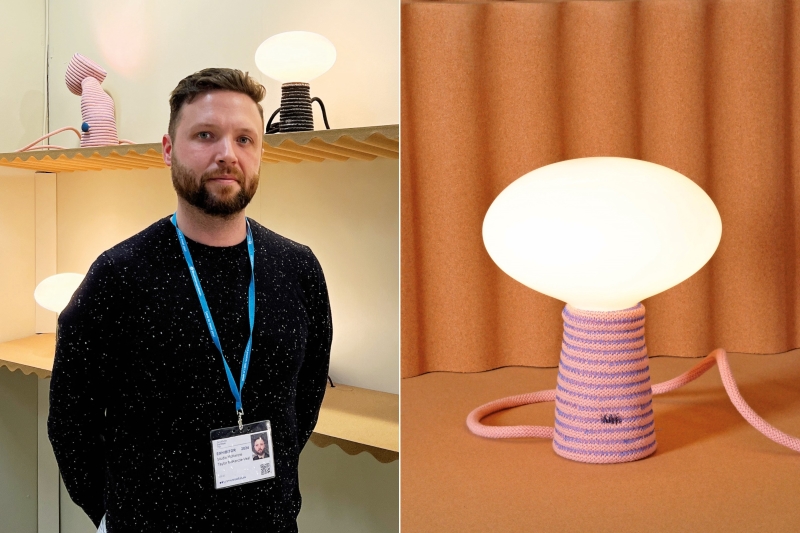
McKenzie-Veal presented the Soft Lamps collection, made from sewn cord that both sheaths electrical wires and forms the body of the products. Emitting warm light with special LED bulbs that can be illuminated or dimmed to the desired level with a simple touch, they are clear expression of craft and technology melded together.
“I spent months immersing myself in sewing and researching braided rope. I sourced dozens of types of cords, consulted with manufacturers and explored different ways of binding the material together using sewing machine and hand stitching.”
He applied the coiled rope technique, a process of attaching wires together in a spiralling pattern to create vessel forms. When combined with different thicknesses and types of cord, and paired with some electronic components, lamp bodies can be hemmed with a sewing machine.
“I overlaid this experimentation with my background in designing light fixtures and working with LEDs. Eventually, this current collection of table lamps emerged. I’m excited to share this because it fuses handcraft with technology. It treats familiar objects with a new perspective,” he explained.
With participation from individuals, design companies and schools across the globe, the Stockholm Furniture Fair opened the door for international visitors to explore and learn about the traditional as well as contemporary aspects of the ever so popular Scandinavian designs, which underscore natural materials, clean lines and outstanding craftsmanship. The next edition of the expo is scheduled for February 2025.
This article first appeared on Apr 1, 2024 in The Edge Malaysia.


